Why Digital Marketing Matters for Small Cybersecurity Businesses
In an age saturated with cyber threats—from phishing scams to ransomware attacks—capturing the attention of your ideal audience is not just desirable, it’s mission-critical. Yet, with marketing budgets stretched thin, many emerging cybersecurity companies grapple with getting noticed online and increasing brand awareness. They wonder: How can we carve our niche? How can we outsmart colossal competitors with a fraction of their marketing spend?
The Short Answer: Smart, cost-effective digital marketing.
The Longer Answer: A strategic blend of content creation, community engagement, and search optimization that cultivates trust, sharpens brand recognition, and fuels sustainable growth in the cybersecurity industry.
Why Invest in Digital Marketing at All?
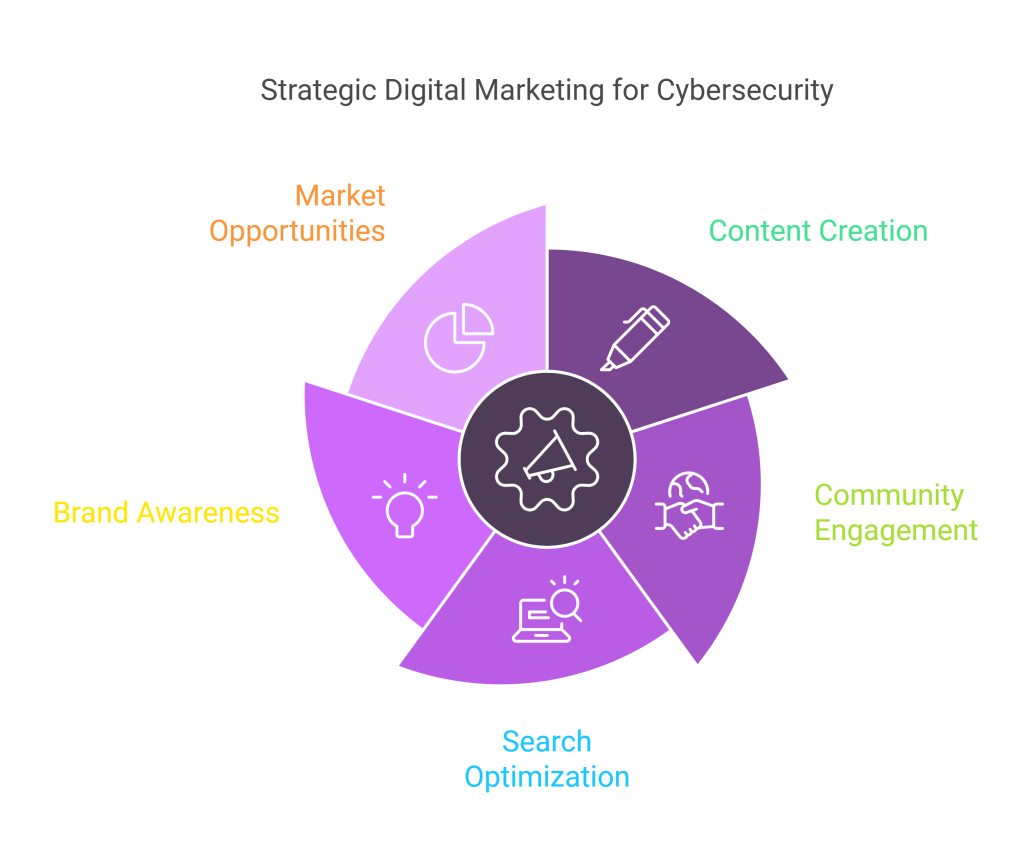
By 2027, the global cybersecurity market is poised to surpass $400 billion is the projected value of the cybersecurity market, highlighting the importance of data security, making it crucial for marketing teams to adapt, signaling colossal opportunities for those who can capture even a micro-sliver of this digital pie. However, if potential clients—often IT managers, lean security teams, and small business owners—don’t know you exist, the best product features won’t matter in the context of your marketing plan for cybersecurity. Strategic online visibility is your ticket to relevance.
This low-cost blueprint emphasizes affordable digital marketing for small business, cybersecurity marketing on a budget, and low-cost marketing for cybersecurity companies. Think of it as an accessible roadmap to level the playing field, allowing you to edge into conversations otherwise dominated by industry behemoths.
1. Laying the Foundation: Preparing for Low-Budget Marketing Success
Every impactful marketing plan starts with clarity. The moment you define your goals, research your audience, and tidy up your digital footprint, every subsequent effort gains momentum.
1.1 Define Crystal-Clear Marketing Objectives
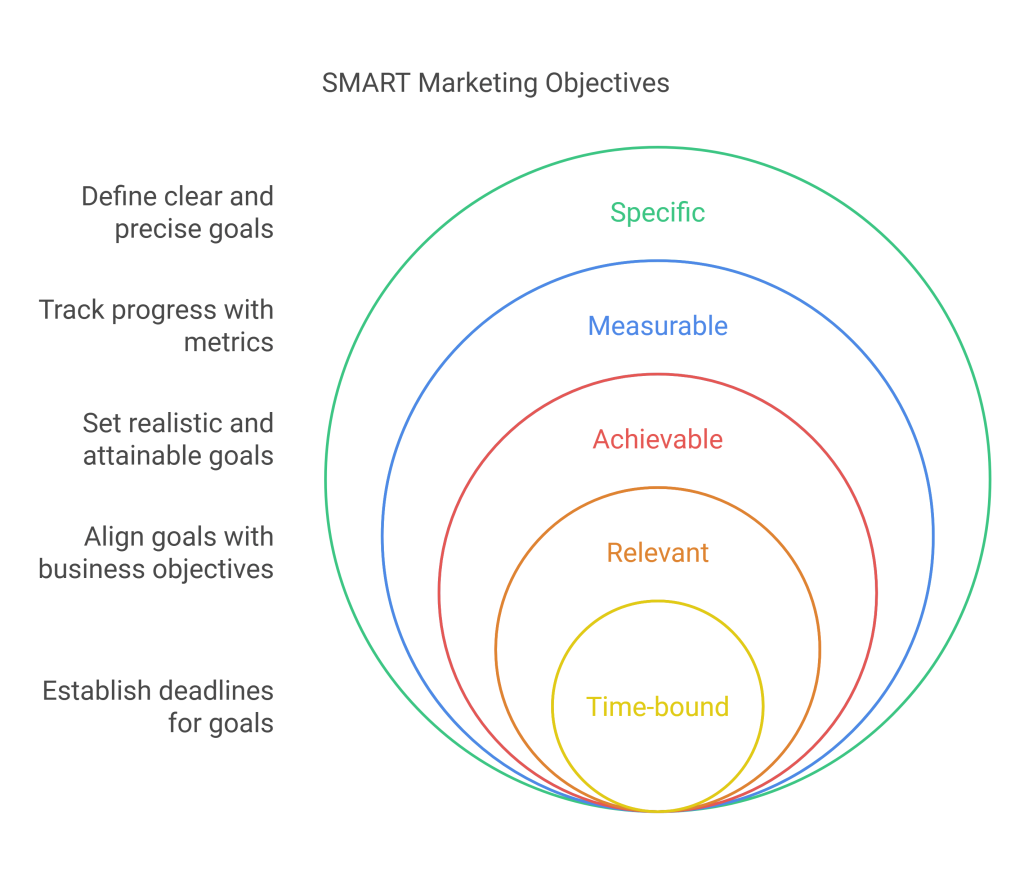
Your marketing shouldn’t chase vague pipe dreams. Instead, craft SMART goals:
- Specific: Instead of “more followers,” aim to increase LinkedIn followers by 20% in three months.
- Measurable: Track metrics like email subscribers or blog conversions.
- Achievable: If your baseline is 100 followers, adding 20 more is realistic.
- Relevant: Align goals with growth aspirations—more leads, stronger brand presence, better conversion rates.
- Time-bound: Fix deadlines to maintain urgency.
1.2 Understand Your Target Audience at a Deeper Level
Picture a cybersecurity manager at a small cloud-based solutions firm. They juggle everything: vendor comparisons, compliance nightmares, and limited marketing resources. They crave trust, authenticity, and clear value propositions. Offer actionable insights—like quick tips, tutorials, or success stories from similar businesses—to resonate on both rational and emotional fronts.
Audience Research Tools:
- Google Analytics: Pinpoint where traffic originates and which pages spark engagement.
- LinkedIn Insights & Polls: Uncover follower roles, decision-making patterns, and content preferences.
1.3 Conduct a Thorough Digital Presence Audit
Before diving into fresh content or ads, ensure your existing foundation is solid.
Key Audit Areas:
- Website Performance: Focus on how your website can enhance your cybersecurity services. Ensure it’s mobile-responsive, fast (ideally under 3 seconds), and intuitive. As per Forrester Research, A frictionless user experience can improve conversions by up to 200%.
- Social Profiles: Standardize visuals, add compelling bios, and sprinkle in those semantic cybersecurity keywords.
Tools for Analysis:
- SEMrush: With this you can check technical SEO issues and competitor keyword overlaps, helping you make content that will increase brand awareness in the cybersecurity industry.
- Ahrefs: Examine backlink quality, find content gaps, and gauge domain authority.
2. Budget-Friendly Content Marketing Strategies
Content marketing endures as a low-cost, high-return tactic for cybersecurity professionals. Original content builds trust, nurtures leads, and positions your brand as a thought leader—even if you don’t have a lavish marketing war chest.
2.1 Blogging for Authority and Trust
Launch a blog focused on problem-solving. Topics like “Top 5 Low-Cost Cybersecurity Tools for SMBs” or “How to Patch Security Gaps Without Draining Your Budget” attract decision-makers searching for affordable solutions.
Why Blogging Works:
Nearly 47% of B2B buyers read 3-5 pieces of content before considering a vendor (DemandGen). If your blog consistently appears when they explore cost-effective strategies, you steadily earn their trust.
Low-Cost Tools:
- Yoast (Free): Streamline on-page SEO for WordPress.
- Canva: It can be a useful tool for startups looking to create engaging content for their cybersecurity campaigns. One can produce polished infographics and headers— no designer required.
2.2 Content Repurposing: Stretching Your Assets
Transform a single in-depth blog into multiple formats:
- LinkedIn Carousels: Summarize key tips visually.
- Infographics: Present stats or step-by-step solutions.
- Short-Form Posts: Turn your blog’s bullet points into quick Twitter threads.
Repurposing saves time and amplifies reach without extra cost.
By leveraging prompt chaining—where a single piece of content prompts the creation of multiple related formats—you can swiftly spin out LinkedIn posts, infographic bullet points, and even video scripts from one core article in mere minutes. For example, start with a long-form blog post, then use AI-assisted tools like ChatGPT to generate concise LinkedIn teasers or summarize your article into a visually appealing infographic outline you can finalize on Canva. This approach not only expands your reach but also ensures a cohesive brand narrative across platforms. Need guidance on refining your persona-based content approach? Check this out: https://mokshious.com/persona-builder/
2.3 Guest Blogging and Strategic Collaborations
Seek guest posting opportunities on SMB-focused tech blogs or partner with cybersecurity forums. Share case studies revealing how low-cost strategies can thwart common threats. Every guest post is a gateway to new audiences, bolstering brand exposure and credibility.
Developing an outreach strategy begins with a curated list of target blogs, forums, and LinkedIn groups where your potential clients spend their time. Use tools like Apollo, Hunter.io, or simple LinkedIn searches to find content managers and editors who might welcome your expert insights. Draft a personalized, value-driven pitch—highlighting how your experience can solve their audience’s problems—and follow up politely if you don’t hear back initially. For strategic collaborations, consider CEO-to-CEO features on popular industry podcasts or CMO-to-CMO LinkedIn Lives, where both parties benefit from cross-promotion. If budget permits, hiring a dedicated outreach specialist can streamline the process. Otherwise, free platforms like Medium, Hackernoon, Quora, Reddit, and niche cybersecurity communities offer cost-free link-building opportunities. Just ensure every post adds genuine value to readers, building trust and brand visibility over time.
3. Harnessing Social Media Without Overspending
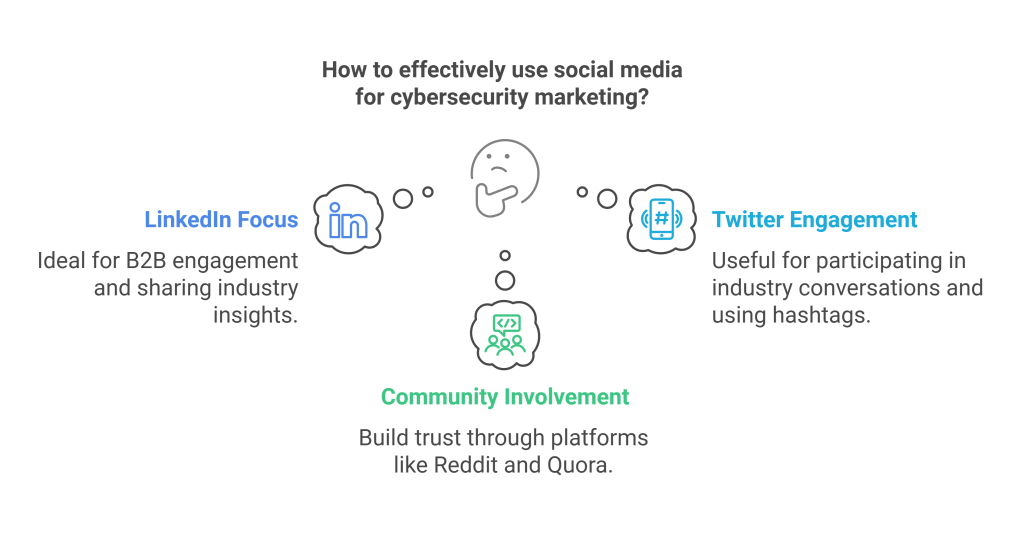
Social media is a digital bazaar of insights, connections, and brand-building opportunities—but you don’t need a million-dollar budget to stand out.
3.1 Platform Prioritization: Go Where It Counts
LinkedIn: A hub for B2B engagement. Share best practices, announce product features, and join niche groups. According to LinkedIn’s 2023 data, brands posting weekly see a
Twitter (X): Even though elon tweeted hashtags are not useful, but Monitoring hashtags like #CyberSecurityTips or #SMBSecurity you can never go wrong. So, Engage in industry conversations and position yourself as a knowledgeable voice, not just a product pusher.
Consider where your ideal prospects actually engage, particularly in relation to cybersecurity awareness month activities. While platforms like Instagram or TikTok may command massive global audiences, they might not yield the ROI you need if your core buyers—IT managers, security analysts, and SMB decision-makers—aren’t active there. Don’t spread thin across social media platforms that don’t align with your cybersecurity objectives outlined in your small business cybersecurity checklist. Instead, focus on platforms where B2B conversations thrive, such as LinkedIn, Twitter (X), specialized forums, or niche Slack communities. If down the line your budget and bandwidth allow for experiments on more consumer-oriented platforms, you can revisit that strategy. For now, let your audience’s online habits guide your choice and content creation plan.
3.2 Social Media Content Calendar: Consistency Over Chaos
Map out posting frequencies and topics. For instance:
- Mondays: Share a how-to blog snippet.
- Wednesdays: Spotlight a client testimonial.
- Fridays: Share a behind-the-scenes look at your team or product updates.
Use free schedulers (Buffer, Hootsuite, Pabbly, IFTTT) to maintain a drumbeat of activity without straining your bandwidth.
3.3 Engaging in Communities: Beyond Broadcasting
Dive into Reddit (e.g., r/cybersecurity) and Quora to establish thought leadership in the cybersecurity industry. Answer burning questions about low-budget encryption methods or DIY vulnerability assessments. Your helpful presence in these micro-communities builds trust and eventually funnels curious users to your website.
Your entire team should become brand advocates – I am serious.
When developers share recent coding breakthroughs or security analysts offer quick vulnerability-fixing tips on LinkedIn or Reddit threads, it humanizes your brand and positions your company as a collective of experts. Encourage your CISO to weigh in on complex compliance discussions, or your CEO to comment on industry trend reports. By making every employee a potential marketer—and giving them the freedom and guidance to build their personal profiles—you create a chorus of credible voices amplifying your brand’s authority across various digital ecosystems.
4. Email Marketing: High-Impact, Low-Cost Precision
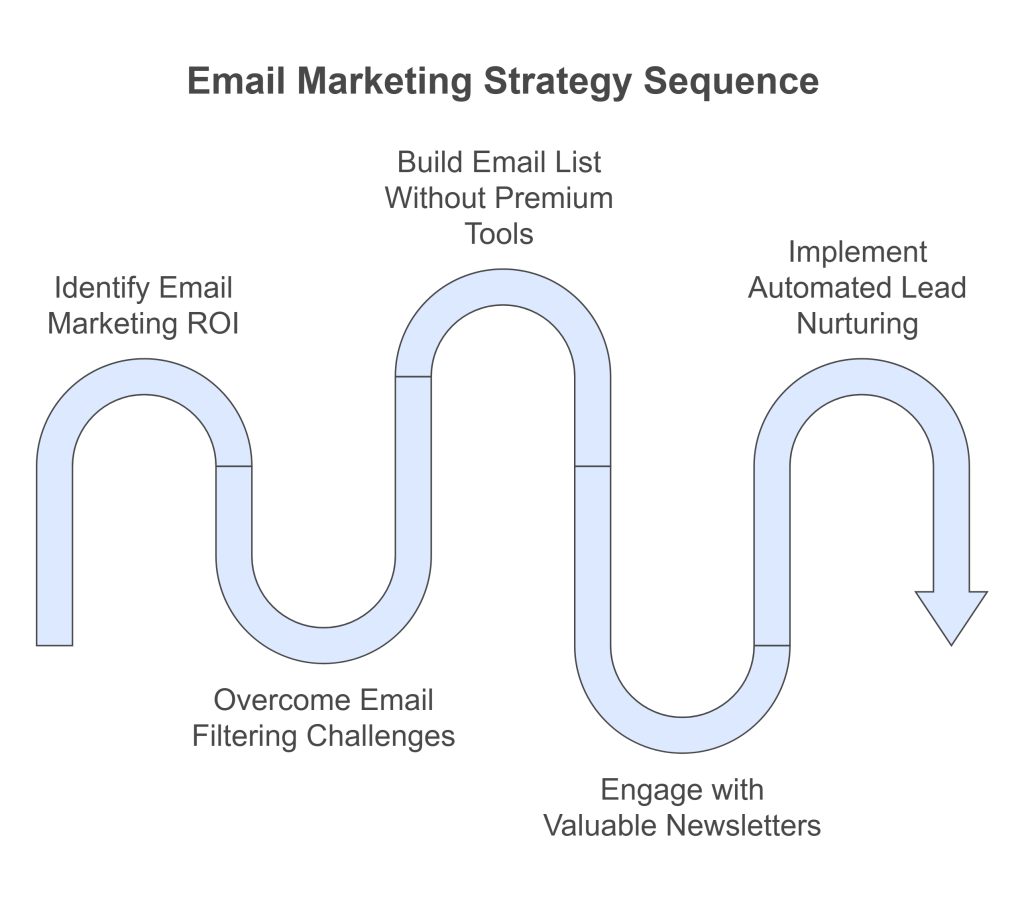
Email marketing stands tall as a digital marketing juggernaut. With ROI reportedly hitting $42 for every $1 spent (Litmus, 2023), it’s a tactic no budget-conscious marketer should ignore.
Today’s email landscape is tough—major inbox providers deploy sophisticated filters to weed out spam and irrelevant content specially in this year Updates. But modern marketers like us are resilient. Tools like Smartlead, Instantly, and Clay simplify cold outreach, while list-cleaning services such as Neverbounce or Zerobounce ensure you’re emailing valid contacts to avoid getting delivered to Spam Box. Warm up new domains to avoid deliverability issues, and if one domain’s reputation diminishes, pivot to another. The imminent launch of Elon Musk’s email service will surely disrupt the market and challenge Outlook, Gmail and Yahoo. The key is to remain nimble, test other senders, and start every email with genuine value to the recipient.
4.1 Building an Email List Without Premium Tools
Feature a bold CTA offering a free downloadable checklist—e.g., “Top 10 Low-Cost Cybersecurity Fixes for Small Businesses.” Such valuable freebies incentivize newsletter sign-ups.
Just like the above example given with a downloadable action plan, continually think of ways to sweeten the deal for your audience. Offer exclusive insights—like a quick, actionable PDF on “5 Simple Ways to Strengthen Your SMB’s Firewall on a Budget.” Then, take it a step further: invite readers who’ve downloaded the resource to reply to your email with a keyword like “More.” aka. Incentivising.
Example: For First 20 People who will download the above checklist, will also get free Apollo list of up to 1,000 contacts curated for their outreach campaign. (you will still need to send me the Apollo URL)
This layering of value hooks and personalized follow-ups keeps your audience engaged and turns a simple email sign-up into a meaningful exchange that builds trust and loyalty.
Free List Management Tools:
- Mailchimp (Free Tier): Start with up to 500 contacts.
- HubSpot (Free CRM): Segment and nurture leads based on their interactions with various marketing channels.
4.2 Engaging Newsletters: Make Every Word Count
Keep newsletters crisp, value-packed, and reader-centric. For instance, highlight a new blog post, share a recent client win, and conclude with a practical tip. Experiment with subject lines to boost open rates—often, curiosity-driven teasers outperform generic announcements.
Keep in mind that cybersecurity buying decisions often take months—sometimes six or more. A single newsletter won’t close the deal. Instead, structure a carefully timed sequence: send a series of 7 newsletters that provide steady education on the importance of cyber security, case studies, and gentle nudges. Add to this a monthly “What’s New” update to remind subscribers you’re steadily evolving and staying abreast of the latest threats and solutions. By consistently delivering relevant insights over time, you’ll be at the forefront of their minds when a critical security need emerges, ensuring that your brand is the one they turn to.
4.3 Automated Lead Nurturing: The Drip Approach
Automate a series of welcome emails. Introduce your brand ethos and areas of expertise, share a success story or video demo, and culminate with a low-priced product bundle or consultation service. Drip campaigns gradually create comfort and familiarity, increasing the likelihood of conversion.
5. Small Budgets for High SEO
It is possible to practice SEO at an affordable solution, in particular if you rely on long-tail keywords and local optimization.
5.1 Long-Tail Keywords: Your Hidden Goldmine
Instead of battling for “cybersecurity solutions,” target “affordable cloud security solutions for small businesses.” Such narrow niches yield higher intent traffic and less competition.
Tools: Ubersuggest and AnswerThePublic reveal keyword opportunities that large competitors overlook.
5.2 On-Page SEO Essentials
Optimize title tags, meta descriptions, and headers to enhance your approach to cybersecurity marketing. Include FAQs to capture voice search queries. Internal links guide users and search bots to your cornerstone content. Studies show that optimizing meta descriptions alone can improve click-through rates by up to 30% (Backlinko, 2023).
5.3 Leveraging Local SEO to Stand Out
Don’t neglect local optimization—especially if you serve specific regions. Update your Google Business Profile, encourage client reviews, and mention local cybersecurity meetups or events. A well-optimized local presence can skyrocket brand visibility in targeted communities.
5.4 Low-Hanging Fruits for Getting Quick SEO Acheivement
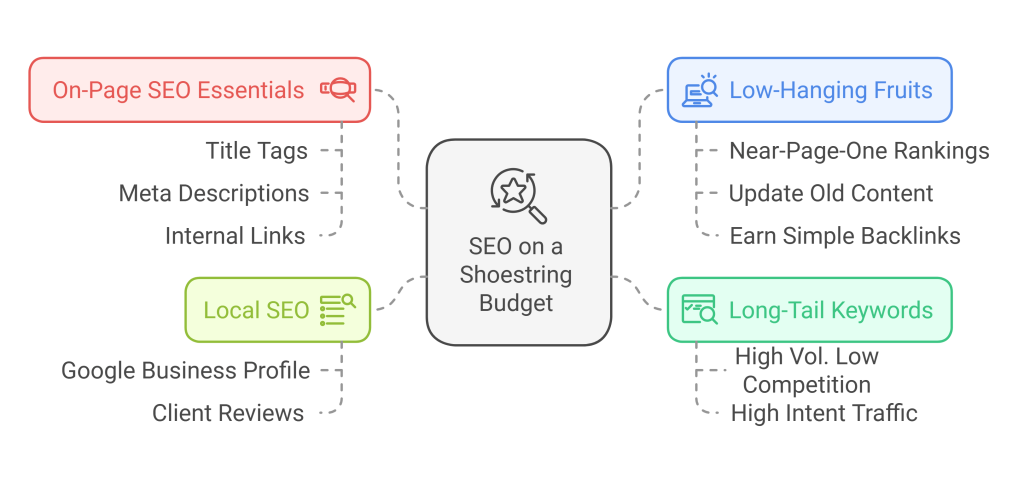
5.4.1 Target Page Two to Five Rankings:
Find keywords and pages ranking on the second to fifth pages of search results. Enhance their on-page SEO, add fresh statistics, or get some good backlinks. Any increase will at least push these pages one notch above or closer to the first page.
5.4.2 Improve Key Page Conversion Elements:
Check what users are doing with tools like Hotjar or Microsoft Clarity. Find points where users are hesitant or dropping off and add clearer CTAs, simplified forms, or short FAQs to keep them engaged.
5.4.3 Updating Old Content:
Update outdated details about cybersecurity trends or product comparisons with up-to-date information to improve your marketing plan centered around cybersecurity. In fact, Google rewards freshness, and updated content can reclaim lost rankings, especially within the cybersecurity field.
5.4.4 Optimize for Featured Snippets:
Configure the various sections of your content as lists, Q&As, or tables to maximize your chances of getting into featured snippets,a valuable piece of SERP real estate.
5.4.5 Leverage Internal Linking:
Link internal links from older high-traffic pages to the new posts. This passes on “link juice” and helps search engines to understand your site better.
5.4.6 Optimize Site Speed:
Image compression, browser caching, and code minification. Faster loading times give a slight ranking boost, better UX, and improved conversions.
5.4.7 Simple Backlinks:
With help from marketing agencies centered on cybersecurity products, you could acquire simple backlinks to help you adopt quick-win resources, shared checklists and very short guides about cybersecurity suggestions. Share them within industry Slack channels or LinkedIn groups-few gracious moderators usually link your site and gradually build authority.
6. Analytics and Iteration: Continuous Improvement
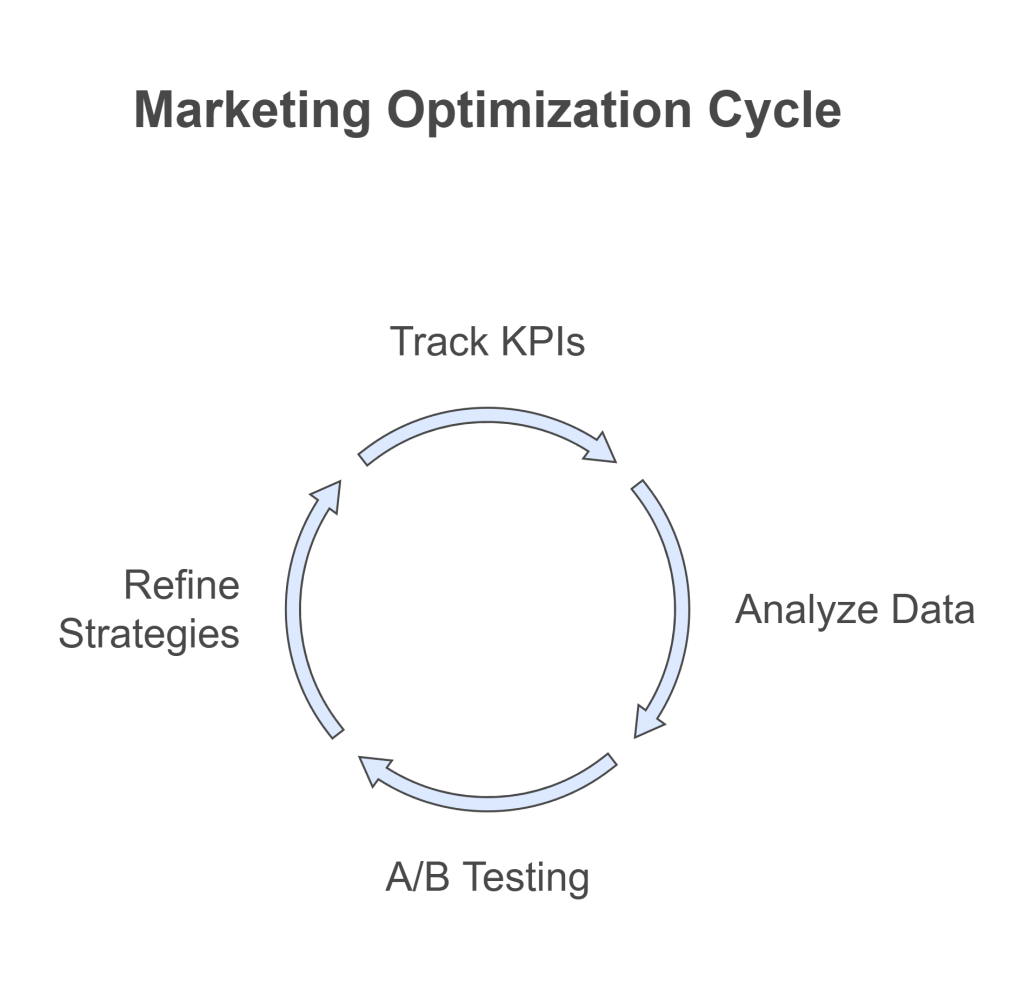
Your marketing plan isn’t static; it’s a living, breathing system. Track, analyze, and refine relentlessly.
6.1 KPIs to Watch
- Organic Traffic: Which blog posts or landing pages attract steady visits?
- Conversion Rates: Are email subscribers becoming leads, and are leads converting into clients? Tracking this can significantly improve ones content marketing strategies.
- Engagement Metrics: On social, track likes, shares, and comments to gauge resonance.
6.2 A/B Testing for Incremental Gains
Test one variable at a time—email subject lines, CTA button colors, and landing page headlines to optimize your cybersecurity content. Over weeks, these micro-improvements add up, turning your low-budget tactics into finely tuned marketing machines.
6.3 Data-Driven Refinements
If LinkedIn posts outperform Twitter, shift focus. If long-tail keyword blogs draw more leads, produce more similar content. Let data guide your investments, ensuring every penny matters.
Tactics for Sharper Visibility
Leveraging Video Content on a Budget
Short explainer videos—shot on a smartphone and edited with free tools—can break down complex cybersecurity concepts. Video consumption now accounts for over 80% of all consumer internet traffic (Cisco, 2023), so even modest video initiatives can deliver outsized returns.
Influencer Micro-Collaborations
Partner with niche influencers in tech communities. A short interview or co-authored blog can expose your brand to pre-engaged audiences at a fraction of the cost of mainstream social media marketing.
Emphasizing Transparency and Social Proof
Showcase genuine testimonials, ratings, and case studies. Clients choosing cybersecurity services often operate from a place of caution. Transparent, verifiable endorsements can tip the scale in your favor.
Conclusion: Small but Mighty Checklist
Emerging players must not only depend upon budgetary allocation in an increasingly competitive and dynamic cyber space. By giving credence to the tactics detailed below, which consist of that astute blogging, strategic posting of content, nurturing leads by means of e-mail, sharpening their SEO skills, and applying data to guide every next step, they may not only whittle away at the digital dominance of their conventional rivals but also keep building their brand awareness steadily.
Remember: The importance of cybersecurity cannot be overstated in today’s digital landscape.
- Start with clear goals and sound foundations.
- Repurpose content to maximize ROI, especially in content marketing for cybersecurity companies.
- Prioritize platforms and strategies proven to engage your audience.
- Constantly refine based on metrics and feedback.
As you navigate this action plan, consider how I can support your journey. From streamlined SEO strategies to custom content plans, I help marketing players go from unseen to indispensable ~ one cost-effective tactic at a time.
Ready to turn low-budget strategies into high-impact results in your marketing campaign for cybersecurity?
Start implementing the steps outlined above.
Forward this checklist to your team, share it with peers, and watch as each actionable insight propels you closer to your marketing objectives.
Over time, this approach transforms your lean marketing efforts into a robust, scalable growth engine; no massive budget required.
